
About China - Culture
Here we would like to introduce basic elements of the Chinese culture to you. Due to the complexity of any culture, this has to remain a brief introduction. We want to tell you about the major holidays, the Chinese concepts of relationships, philosophy and religion, Chinese traditional medicine and Chinese art. If you have any interest in further information or more details, you can find links to other websites under "Related Links".
The Chinese, like any other culture, have developed their own customs and traditions to cope with social life and environment. Even if contemporary in Chinese cities look very much the same as their Western counterparts, there are different manners, habits, holidays and traditions.
Holidays
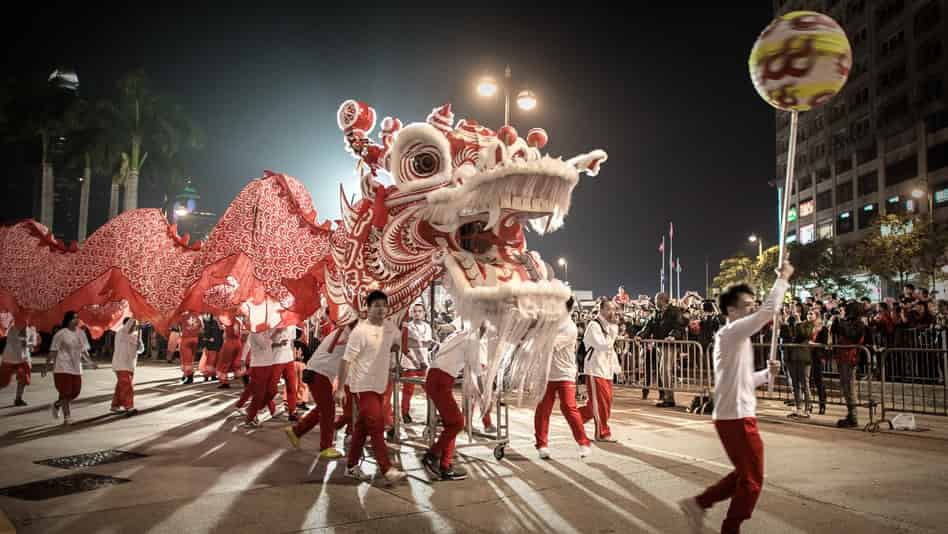
In China, there are many holidays that we in the Western World often know only by name. Although many Chinese city dwellers also celebrate Christmas, Valentine's Day, or New Year, these kinds of celebrations differ substantially from ours. Most Chinese holidays are based on the lunar calendar and have no fixed date in the year. They usually arise from centuries or millennia-old traditions and are celebrated in the company of family and close friends. Some of the most important holidays are the following:
- Spring Festival/Chinese New Year :
The Spring Festival celebrations start every year between the 21st of January and the 21st of February (the second new moon after the winter solstice) and end 15 days later with the Lantern Festival. It is the most important holiday in China and many neighboring countries. It can be compared to the time between Christmas and New Year in Western countries. Prior to this festival, hundreds of millions of migrant workers return year after year to their family, which is often referred to as the "largest mass migration in history ". Preparations already take place on New Year’s Eve. The houses will be decorated with red, lucky symbols and the Chinese zodiac animal of the year to come, and the food for the following days will be prepared. Unmarried family members receive gifts, usually money in red envelopes. The whole family will eat and drink together and burn loud fireworks. In addition, it is common during these days to honor one's ancestors and to offer them gifts as well. You definitely should not miss the opportunity to celebrate this festival together with your host family. You will experience unforgettable, cordial moments for sure.
- Qingming Festival:
The Qingming Festival takes place at the beginning of April (on the 4th, 5th or 6th) and is dedicated to deceased friends and ancestors. Graves are cleaned, incense will be burnt and gifts in form of fruits and paper money, which will be burnt, will be offered to the beloved and honored dead.
- Dragon Boat Festival:
The Dragon Boat Festival is always held on the 5th day of the 5th Lunar month (usually the beginning of June) and is celebrated with colorful dragon boat races. Traditionally, you will eat Zongzi, glutinous rice, which is wrapped in leaves. According to legend, the festival goes back to an ancient story from the Warring States Period. It tells about the nobleman Qu Yuan, who had been banished from the court because of his political point of view. That act of injustice filled him with deep grieve and despair. Seeing no way out of his misery he threw himself into the Miluo River, whereupon the local residents tried to save him with their boats, but failed.
- Moon or Mid-Autumn Festival
The Moon Festival takes place on the 15th day of the 8th Lunar month (between early September and early October). On this day of the year, the full moon will appear larger than any other day. To celebrate this, throughout China one bakes sweet moon cakes with various fillings that then are given to relatives, colleagues, and friends.
- National Day (October 1)
The National Holidays begin every year on October the 1st and are held in remembrance of the founding of the People's Republic of China in 1949. These holidays are especially popular among the Chinese for travelling.
If you plan to travel during Chinese public holidays, we recommend that you book your tickets as early as possible. Your personal advisor will gladly be of your assistance.
Face & Relationships
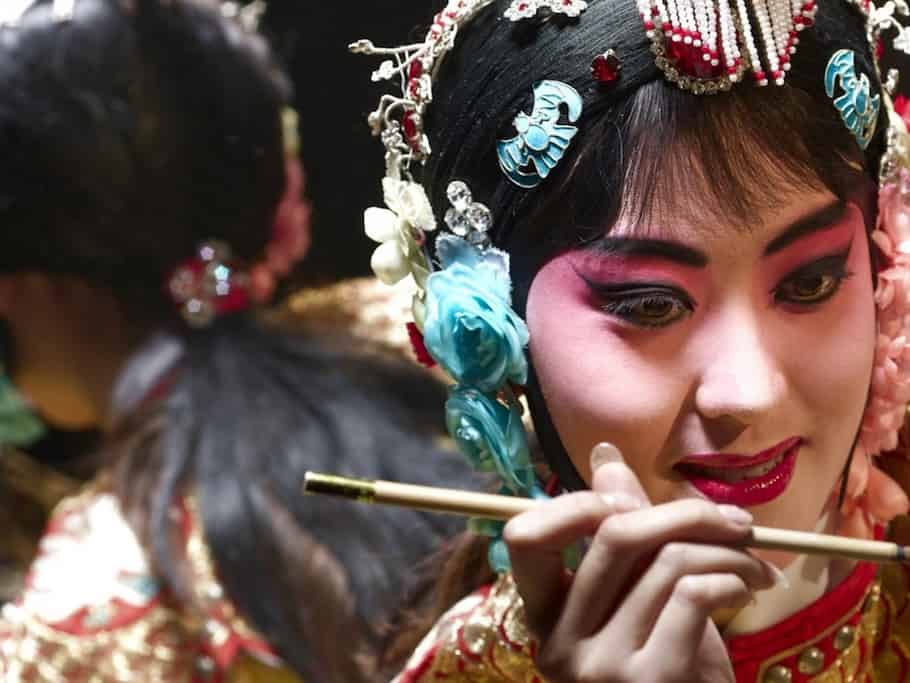
The concepts of face (mianzi) and relationships (guanxi) evolved from Confucian philosophy and are still the cornerstones of Chinese social life. In general it can be said that the Chinese emphasize the interpersonal harmony and keeping the face as well as maintaining good relations to other people are basic guidelines.
- Mianzi:
The "face" of a person is an expression for someone’s perceivable dignity and is linked to the social status. To give face to someone else can increase your own status and others will think of you as a benevolent and generous. To take face is considered immature and is regarded as a lack of self-control. This means that if you're in China, you should pay attention not to directly criticize your counterpart in the presence of others. If you wish to express a different opinion, you should first assure your counterpart that you understand his or her point of view and then afterwards explain your point of view. If you would like to hear someone’s critical point of view regarding a subject such as politics, it is the easiest first to praise the current circumstances. That way you will give the other person enough space to express his or her real opinion.
- Guanxi:
The importance of relationships in China has emerged from its long history full of changes. Therefore, Chinese often consider relationships as more important than laws as those provide a social form of personal safety and influence. For instance, if you want to get to know someone it is common in China to be introduced by someone else, who knows the person already, first. It works like a transfer of trust. If you have good relationships with other people, you should not be afraid to ask them for favors. That also includes things which are considered rude by many Westerners. For example, a Chinese friend would unconditionally offer you a place to stay if you needed it. Similarly, relations are a good resource to create when disagreement arises and a third person is asked to mediate.
This also means in case you should have future plans in China, your host family will surely help you or introduce you to other people, who will be able to help you.
Religion & Philosophy
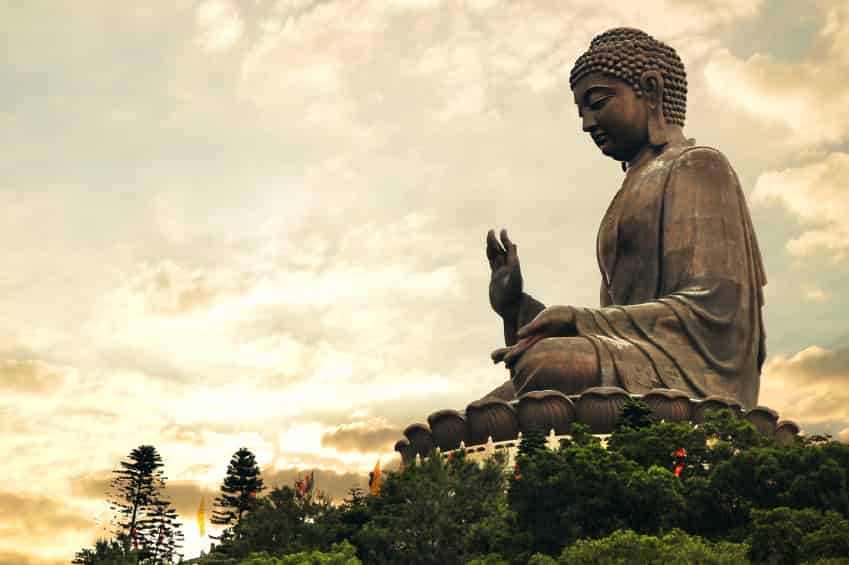
Although over 90 % of the Chinese officially state that they have no religions, the beliefs of their forefathers still have a great impact on their lives today and temples across the country are experiencing a new boom. For the Chinese, this is no contradiction. Even Deng Xiaoping, the father of China's opening policy, once said: "What do I care whether a cat is white or spotted? The main thing is that it catches mice." And in ancient Chinese texts, it is not uncommon that Confucian, Buddhist, and Taoist monks give helpful advices side by side.
This also explains why concepts such as Fengshui could develop in China, although its approaches differ from region to region and from teacher to teacher. Similarly, Taoist beliefs had and have strong influences on Traditional Chinese Medicine (TCM), which regards man as a unity of body, mind, and environment. Concepts such as Yin and Yang, or the essence of life, Qi, are used in TCM. Similarly, classical philosophical approaches of Buddhism, Taoism, and Confucianism are shared in various schools of thought in China.
Anyone who is interested in the various Eastern religions and philosophies will find in China a vast variety of influences and teaching approaches that until today have strong influences on the lives and actions of Chinese people.
- Confucianism:
Confucius or Kongzi (551 - 479 BC) was born in the state of Lu (today’s Shandong province) during the Spring and Autumn Period, and had been the son of an aristocratic family. After his mother's death, he gave up his position as a state official and became a teacher.
His philosophy emphasizes the role of a person in society and the appropriate action in relation to this position. He tried to learn from the past and regarded the war-torn times in which he lived as the downfall of civilization itself. He admired the pre-Christian dynasties which had united large parts of the Chinese cultural sphere. What is known about his teachings today has been written down by his students, since he did not keep any journals.
Five essential ideas guide the lives of people
- Ren (humanness) requires benevolent actions between people. It teaches us which people to honor and which not.
- Li (ritual) emphasizes human interactions according to ritual. It states rules of conduct and courtesy that show us how to live the Ren.
- Xiao (loyalty towards your parents) demands obedience and respect towards parents, ancestors and teachers. The strongest Xiao-relation exists between son and father and is even regarded to stand above the law.
- Zhong (loyalty) is the transfer of the concept of Xiao onto the professional level. It does not mean blind obedience, but also to advise your superior truthfully if he or she makes wrong decisions.
- Taoism:
The origins of Taoism are unclear and only legends exist. It did not develop into an actual religion until the Tang Dynasty (618-917 AD). The most widespread view is that Lao Tzu, who lived at the same time as Confucius, founded Taoism with his book, the Daodejing (Writings of the way and virtue). Lao Tzu was an archivist in the State of Ku and later gave his up his position to travel the country. He unintentionally founded the Taosimus by simply writing down his views on the world. Later Taoism had been heavily influenced by the writings of Zhuangzi and Buddhism, which gave him his gods and rituals.
Taoism advocates no particular form of society, but the return of man to nature. In the Daodejing is written, "The more taboos and prohibitions there are in the world, the poorer people will be.” The main idea of Taoism revolves around the Dao, the way, a never ending force, that cannot be understood by men, but is observed everywhere in nature. Through the Dao Yin and Yang, the two opposite but interdependent forces, come into being. They affect everything in the universe. They represent ebb and flow of the forces of reality.
Guidelines of Taoism are:
- Wuwei (without target): It can mean to take no actions at all as well as acting without deem.
- Ziran (Nature) tells us to act according to nature and spontaneously. Wuwei and Ziran are interdependent: Both ideas are interdependent. Wuwei is the ability to appreciate someone’s natural (not conditioned), spontaneous behavior, someone’s Ziran. Ziran enables us to act in accordance to Wuwei.
- San Bao (Three Treasures): The three treasures are the Jing, vitality, the Qi, the essence of life, and the Shen, consciousness, intellect and spirituality. Only who brings these three forces into harmony can achieve an eternal life.
Westerners are often recommended to turn to Western Romanticism to gain a better understanding of Taoism and how to look up to nature as a role model.
- Buddhism:
Siddhartha Gautama (he who accomplished his aim; 563 - 483 BC) was born as a prince in Kapilavastu (today’s Nepal). After he had seen the suffering in the world, he left the palace at 29 to find the ultimate truth and an escape from suffering. He tried to gain enlightenment from meditation and asceticism, but failed. So he sat down under a tree and swore not to rise until he found enlightenment. Finally at the age of 35 he achieved his goal and became Buddha [one who is awake]. From then on he was called Sakayamuni [capability and kindness] and spent the rest of his life to travel through North India, spreading his teachings
Buddha's life had not been written down until 500 years after his death. Buddhism came to China around the same time. However, due to the reluctance of the Confucian officials it did not gain greater influence until the lenient rule of the Tang Dynasty.
Buddhism emerged from Hinduism, which teaches that life is an endless cycle of rebirth. One is born again dependent upon on his karma, the sum of one’s good and evil deeds, words and thoughts. Buddhism offers a way out of this cycle of rebirth if one realizes the Four Noble Truths and lives accordingly:
- All life is suffering.
- Suffering arises from craving.
- To stop craving leads to the end of suffering.
- This only can be accomplished by the Eightfold Path.
The Eightfold Path includes true views, true intentions, true speech, true conduct, true livelihood, true effort, true thinking, and true pursuit.
Those mastering the Eightfold Path can enter the Nirvana (blown out). Regarding the respective Buddhist denomination, it is possible to step out of the Nirvana and re-enter the circle of life and rebirth. This is especially emphasized in Lamaism, where the Dalai Lama is regarded as the reincarnation of the enlightened Avalokitesvara.
- Fengshui:
As mentioned earlier, the teachings of Fengshui quite differ from time to time, region to region, and teacher to teacher. Although some approaches of Fengshui have already been documented in pre-Christian times, the name appears not earlier than during Song Dynasty (960 -1279). The common basic idea is that one's life not only depends on one’s morals and deeds, but also on other forces. These forces are Qi, Yin and Yang, demons, spirits, one’s own ancestors, gods and so on. Fengshui masters provide guidance in regard to the will of those powers in order to enable people to live a happy life. Especially in China, these masters are consulted on many occasions such as setting a wedding date or choosing suitable name for one’s offsprings.
Traditional Chinese Medicine (TCM)
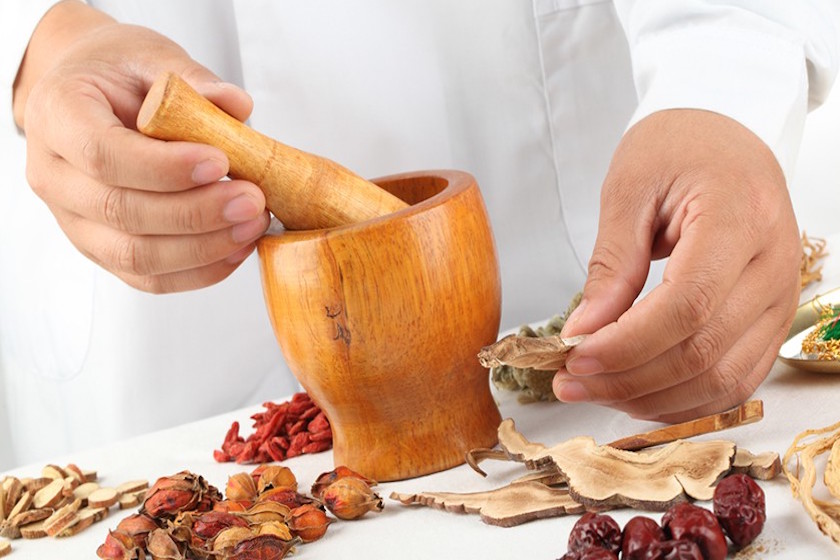
Western medicine did not spread to China until the 19th Century. Prior to that time, Traditional Chinese Medicine was virtually the only source of medical care. It uses a holistic approach and makes extensive use of herb, acupuncture, and massages. Additionally, it was strongly influenced by Chinese philosophies. Since the 1950s, TCM is becoming more and more in the West as an alternative to the conventional Western medicine.
TCM has developed slowly over thousands of years. The first treatment by acupuncture took place around the year 2800 BC. During the pre-Christian dynasties, the first records of herbs and treatments were created and already before the first unification of China, it developed into an independent branch of science. Although the main concepts of TCM had already been developed until the Han Dynasty (210 BC - 220 AD), the term "Traditional Chinese Medicine" itself was not used before the 1960s. Mao Zedong ordered the scientific classification of TCM’s elements in order to create an inexpensive medical system for the rural population free of superstition
Holism is the basic concept of TCM. On the one hand it means that the parts of the human body interact and cannot be looked upon separately. On the other hand it states that a human being is integrated into nature and society. Therefore, it is not enough to examine the patient only physically. Hence, it is necessary to take all interactions into account to make a correct diagnosis.
The historical interaction between TCM and Chinese philosophy can clearly be seen considering the vocabulary and the explanatory models. Key concepts such as Qi as well as Yin and Yang derive from Taoist believes and the theory of the Five Elements can be found in Fengshui teachings as well.
- Qi:
Qi is the essence of life. The whole universe is flooded with Qi, which is in accordance with the Dao in perpetual flux. Where the Qi condenses, it forms objects and living things like rocks, birds or humans. This also means that everything is connected by the flow of Qi. Its movements cause changes such as the change of seasons, and when it evaporates, it means the end of all tangible beings.
- Yin und Yang:
Yin and Yang mark a quality’s opposite sites. Yin marks the static, passive, cold, moist, dark, interior side and Yang the changing, active, hot, dry, bright, outer side. All things can be organized by Yin and Yang according to their nature. Yin and Yang are not per se good or bad. It depends on the things or pro-cesses in respect. However, the quality of their relation is decisive. There are five basic aspects of Yin and Yang relation:
- Yin-Yang interaction: It is necessary for the generation of all things, e.g. the sexual intercourse between man (Yang) and woman (Yin).
- Yin-Yang opposition: By opposition of Yin and Yang balance can be kept, e.g. to rest (Yin) at night allows us to act (Yang) during daytime.
- Yin-Yang interdependence: Both of them cannot exist without each other. E.g. there is no activity (Yang) without the body (Yin) and without activity the body would die.
- Yin-Yang wane-wax: When Yin wanes Yang waxes to an equal degree and vice versa. Hence, a quantitative dynamic balance is kept. E.g. actions (Yang) dominate the day and rest (Yin) the night.
- Yin-Yang transformation: When the wane-wax passes a certain point a qualitative change from Yin to Yang or vice versa takes place. E.g. the human body transforms nutrients (Yin) into functions (Yang).
The understanding of the Ying and Yang relations is indispensible in TCM because diseases will arise when they are disturbed
- The five elements (Wu Xing):
In TCM interactions are often explained with reference to the Five Elements. Each also represents one the body's organs. The Five Elements are: wood (liver), fire (heart), earth (spleen), metal (lung), and water (kidney). All elements are connected by the concepts of restraint and creation with each other, which guarantees the balance of nature. An example: Earth restrains water, water creates wood, and wood restrains earth. Furthermore, the five elements represent processes: water flows downwards, fire strives upwards, wood expands, metal reforms and earth allows growth. Similar to Yin and Yang, these processes can be set into relation of man himself and his interactions to the environment. When there is disturbance of the relations’ equilibrium, diseases occur and thus treatment is needed.
Art
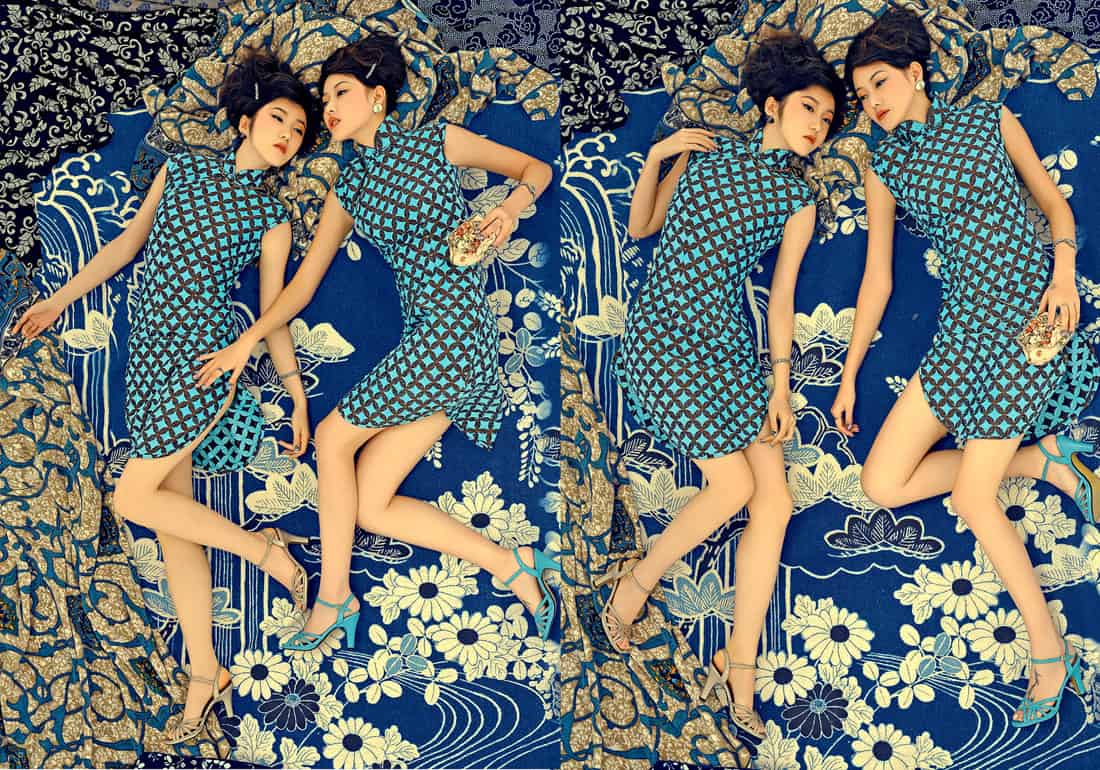
Also regarding the arts China does not need to look shy upon other countries. When talking about Chinese art most people think of silk paintings, calligraphy or Chinese classical music. However, China has so much more to offer. The traditional Chinese martial arts and contemporary acrobatics are world famous. Shanghai with the M50 or Beijing with the 798 have large and famous art centers, where you can freely look at contemporary art without paying any admission. Modern Chinese music, the so-called "Mandopop", is played in many bars and restaurants and is strongly influenced by Western music. Young Chinese literature and films are the subjects of controversial discussions and often criticize openly shortcomings of the society. In China, art develops rapidly and often reflects the Zeitgeist; one reason is that there are not as may scholarships available to artists as in many Western industrialized nations. In the many theaters of China’s major cities, current issues are processed in new plays and not slightly changed old plays replayed again and again. One can spend a year in a city like Beijing and will still have the opportunity to discover new things.
As one cannot outline every form and aspect of art; we provide some more links for you under "Related Links".